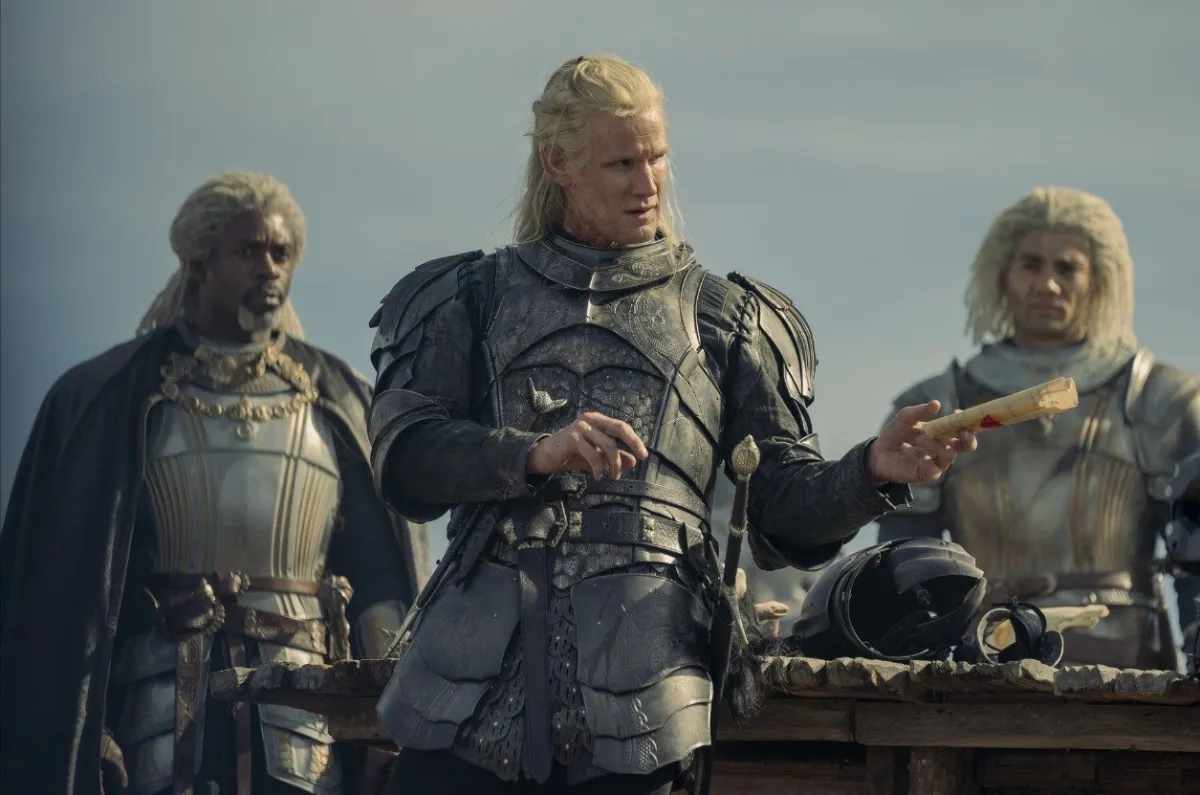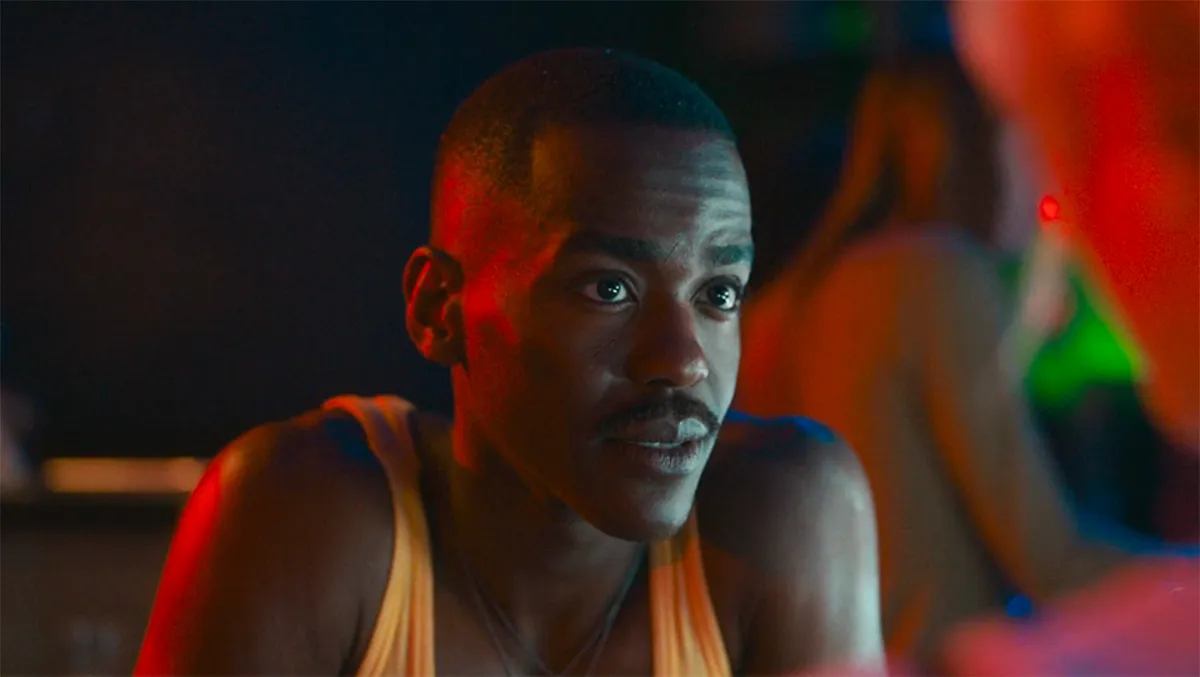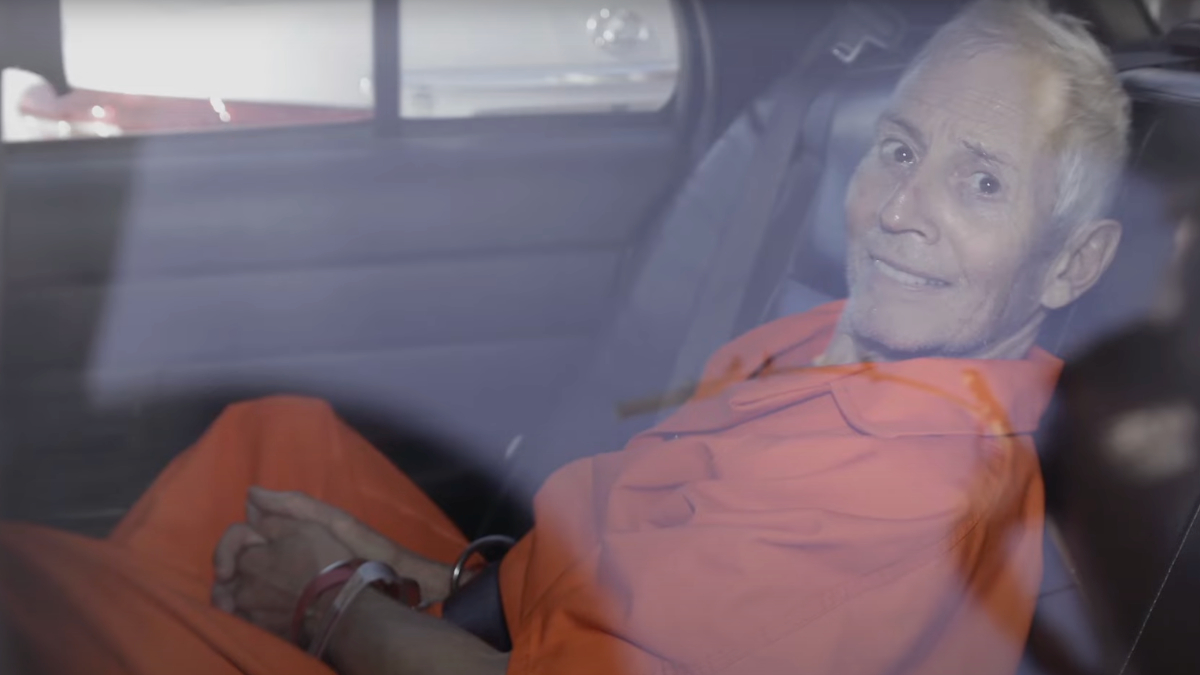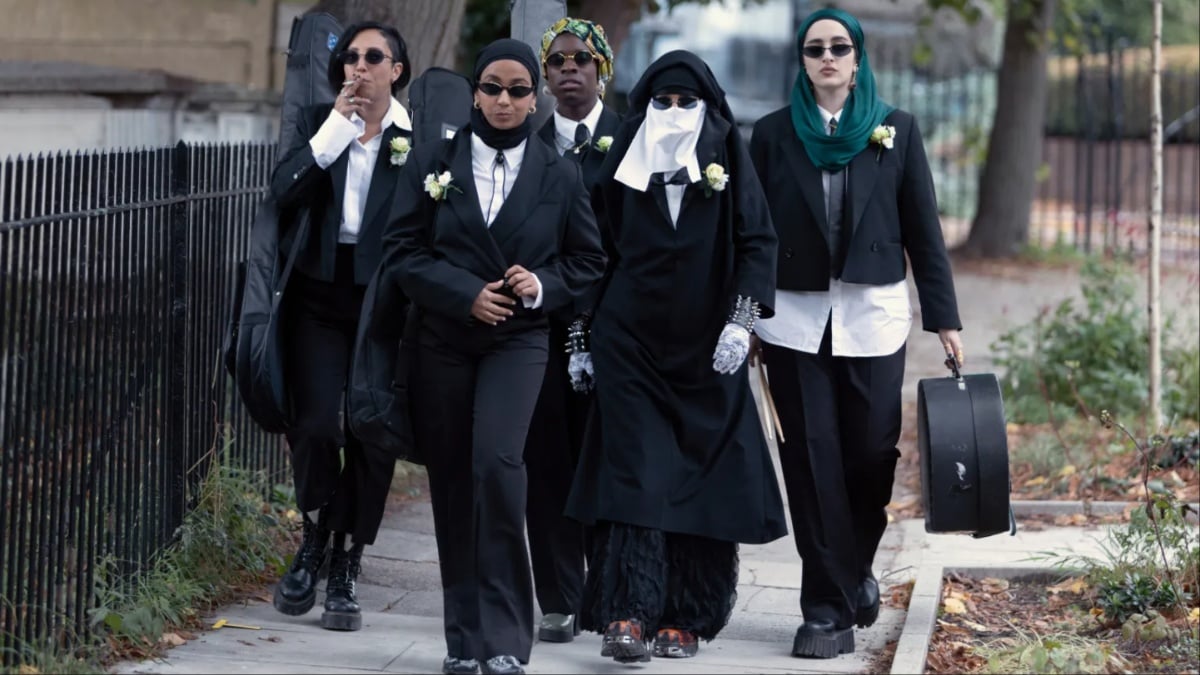War is brewing on House of the Dragon— and not just on the Stepstones, as Episodes 3 and 4 have shown us. I think that by now we have all figured out, no matter whether you’ve read the source material or not, that there’s a conflict for the Iron Throne ready to explode, one that will drag the entire realm down in a spiral of fire and blood.
Hopefully, this means that the list of locations of Game of Thrones’s prequel will soon expand to some other places in Westeros that we’ve come to know and love—after all, a war needs allies to raise their banners and march in support of this and that claimant.
What better occasion, then, to review a map of Westeros and refresh some of the knowledge we might have lost in the years that separate us from the end of Game of Thrones? After this brief guide put together by me, myself, my unending love for A Song of Ice and Fire lore, and my trusty copy of The World of Ice and Fire, you’ll be able to hold your own at every strange table we’ll see pop up throughout House of the Dragon—wooden figurines and all.
The Crownlands
The Crownlands are the only part of the Seven Kingdoms that the Crown rules directly rather than through liege lords. The reason is quite simple: they didn’t exist before the arrival of Aegon Targaryen and his sister-queens Visenya and Rhaenys. Before the dragons, the area was constantly disputed between the kings of all the surrounding kingdoms— but the Conquerors made it their first stronghold in the realm and started spreading their rule from there.
Because of that, of course, both royal seats of power are in the Crownlands. The first is King’s Landing, the capital of the Seven Kingdoms with the infamous Red Keep. The other is the island fortress of Dragonstone, the Targaryen ancestral stronghold and the official seat of the heir to the Iron Throne.
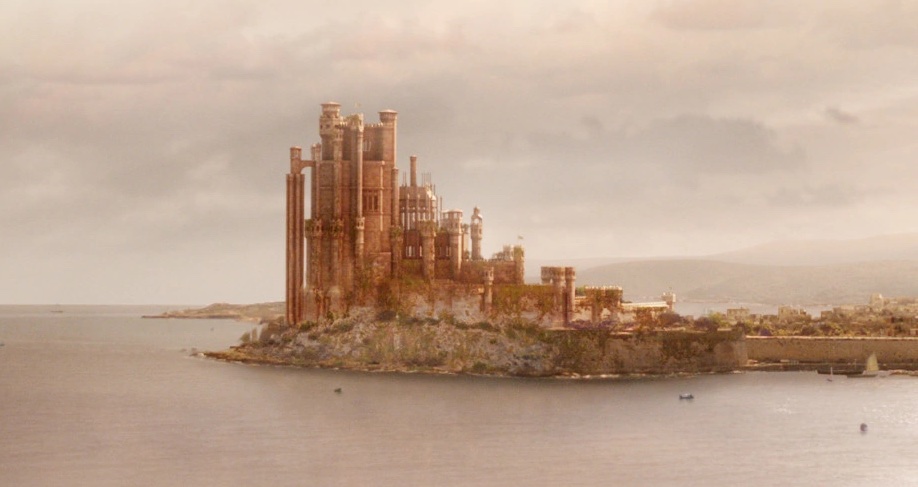
Other notable locations in the Crownlands include the Kingswood, located just outside of the capital and a hotspot for royal hunts and outlaws both. Then there’s the island of Driftmark, close to Dragonstone and the seat of House Velaryon—usually the place to go to find one of the best fleets in the Narrow Sea.
As we learned from Jon Snow and Ellaria Sand in Game of Thrones, bastard children born from noble lords have a unique surname based on which part of the Seven Kingdoms they were born in— for those born in the Crownlands the chosen name is Waters.
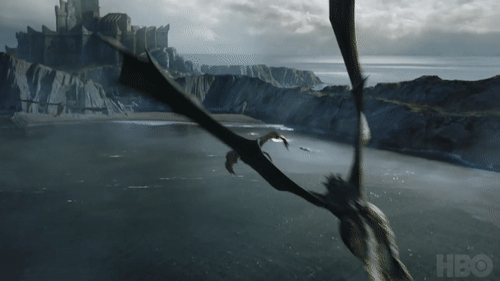
The Stormlands
The Stormlands are immediately south of the Crownlands—their name comes, as one might guess, from the massive storms that arrive on its shores from the Summer Sea.
Before the Conquest, the Stormlands were the Kingdom of the Storm, ruled by the Storm Kings of House Durrandon. They were said to descend from Durran, a legendary figure from the Age of Heroes who had started the line together with Elenei, the daughter of the sea god and the goddess of the wind.
Once Aegon made land in Westeros, he sent his most trusted advisor—and possible half-brother—Orys Baratheon to win the Stormlands by defeating their King, Argilac the Arrogant. Orys managed to kill Argilac in single combat, but Argilac’s daughter Argella famously barred the gates of her castle to stop the conquerors from entering. Eventually, though, her resistance was won through marriage.
Orys and Argella founded House Baratheon, who still rules over the Stormlands with the sigil of the black stag on a yellow field — originally the sigil of House Durrandon which Orys maintained for his new line — and their words “Ours is the Fury.” Their seat is the ancestral castle of the Storm Kings, Storm’s End.

Some of the minor lords in the Storlmands, bannermen to the Baratheons, include House Connington of Griffin’s Roost; House Dondarrion of Blackhaven and House Selmy of Harvest Hall— of which we’ve seen one member each during Game of Thrones; House Estermont of Greenstone, the House of Lady Cassana Baratheon, the mother of Robert, Stannis and Renly Baratheon; and House Tarth, which rules from the Isle of Tarth off the shore of Storm’s End.
Noble Stormlands bastards are called, of course, Storm.
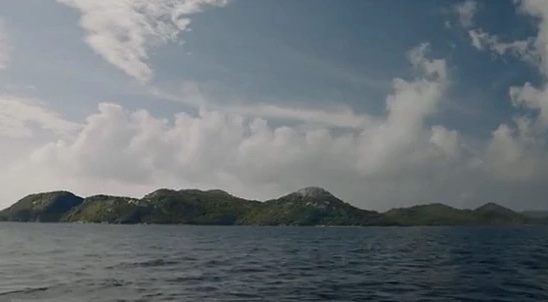
Dorne
Dorne sits at the Southernmost tip of Westeros, and its character and history are distinctively unique from the rest of the Seven Kingdoms. For starters, Dorne was the last to enter the realm—almost two hundred years after the Conquest, a feat that was accomplished through marriage by King Daeron the Good.
But that’s not the only bit of history setting Dorne apart. While most of the Seven Kingdoms—North excluded—were founded by Andal invaders from northern Essos, Dorne originated instead from the Rhoynar, a people who lived along the river Rhoyne, flowing along the western side of Essos.
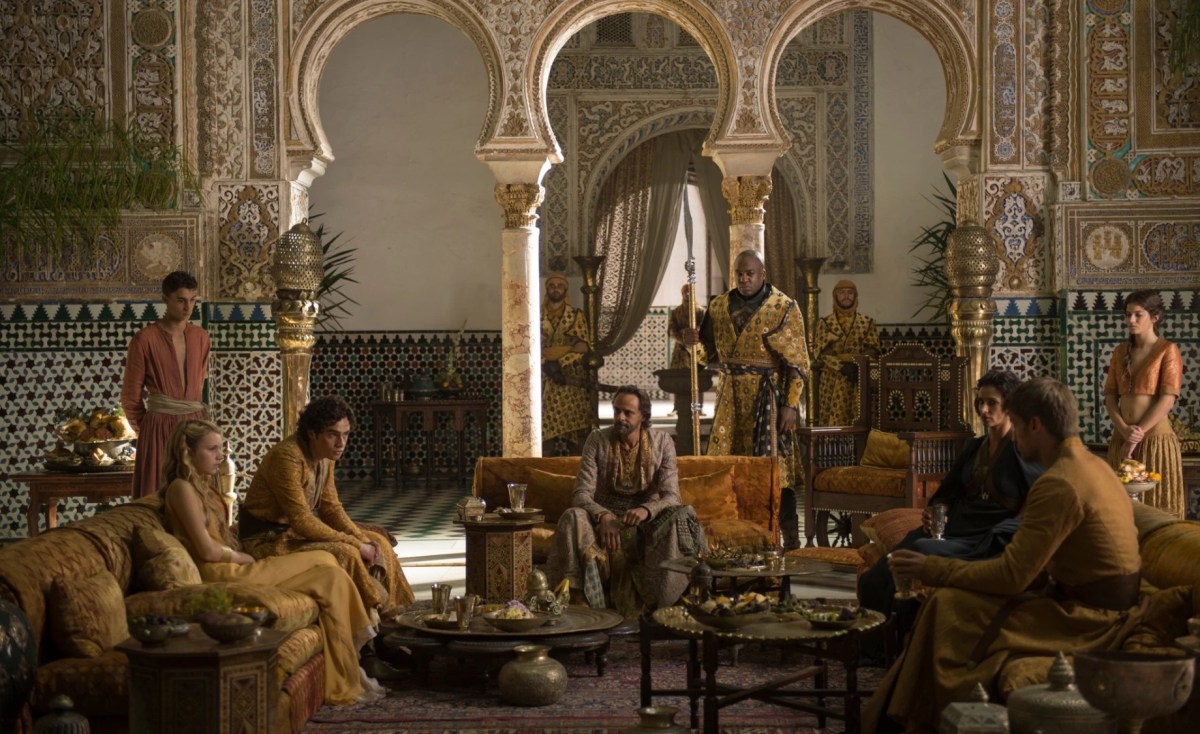
Princess Nymeria of Ny Sar famously took her people on ten thousand boats to escape the dragonlords of Old Valyria and sailed across the Narrow Sea to find a place where they could live in peace—and they found Dorne. Nymeria wed Dorne’s ruler, Mors Martell, creating House Nymeros Martell and settling into the seat of Sunspear—and their descendants have remained Princes of Dorne. Fun fact: Dorne is the only part of the realm with absolute primogeniture, meaning that there have been a good number of ruling Princesses of Dorne over the centuries.
Because of their still-persisting Rhoynish customs—overlapping with more widely spread ones like the bastard surname, which is Sand in Dorne—and the fact that their two centuries of resistance to the Iron Throne put them in direct conflicts with the neighbouring lords of the Stormlands and the Reach, Dornishmen are still looked at suspiciously throughout the realm, with many negative stereotypes milling around them.
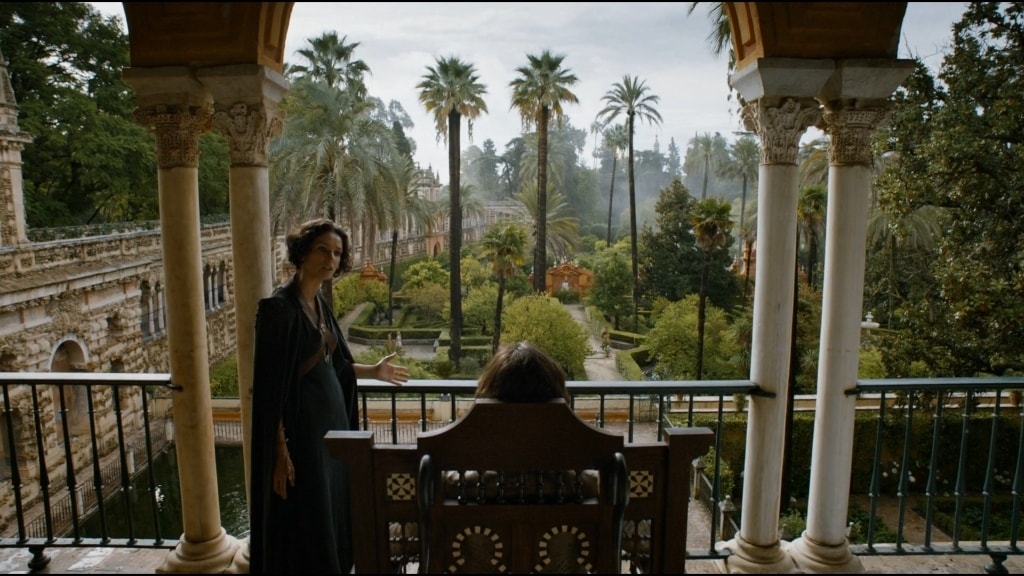
The Reach
The Reach might only be the second-largest of the kingdoms, but it’s also the most populated and most fertile—its grain supplies have saved Westeros several times during long and harsh winters. Widely considered one of the most beautiful corners of the Seven Kingdoms, the Reach is also traditionally the birthplace of chivalry and the art of jousting.
Like the Stormlands, the Reach also obtained a new ruling House with the Conquest. Aegon Targaryen obliterated the armies of Mern IX Gardener, the last King of the Reach, during the infamous Fields of Fire. He then elevated House Gardener’s stewards, the Tyrells, to the titles of Lord Paramounts of the Mander and Wardens of the South.
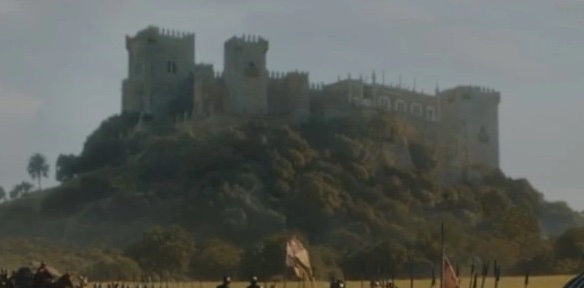
House Tyrell, with their golden roses on green fields—it’s no surprise that the name for bastard children in the Reach is Flowers—still rules over the Reach from what had been House Gardener’s seat, the splendid castle of Highgarden.
Another important location in the Reach is Oldtown, which used to be Westeros’s largest city before the construction of King’s Landing. The seat of House Hightower—which resides in the homonymous Hightower, both a castle and a lighthouse—the city of Oldtown houses the Citadel, where all masters are trained before being dispatched throughout the Seven Kingdoms.
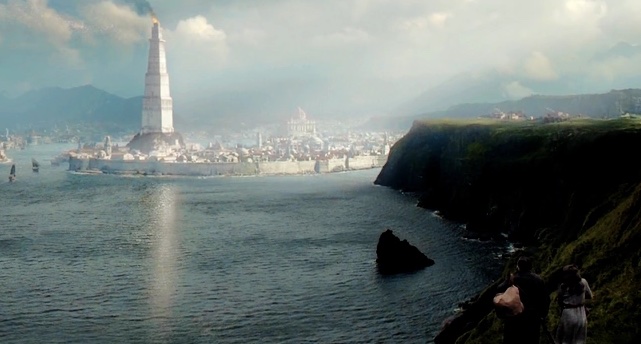
The Westerlands
Bordering with the Reach and the Crownlands and looking out onto the Sunset Sea, the Westerlands have been ruled by House Lannister ever since their legendary founder Lann the Clever tricked House Casterlys out of their ancestral seat, Casterly Rock. Sometimes referred to as simply “the Rock,” Casterly Rock is famously high up above the sea, carved out of a massive stone three times the height of the Wall rich in gold veins and mined by the Lannisters and their men for thousands of years.
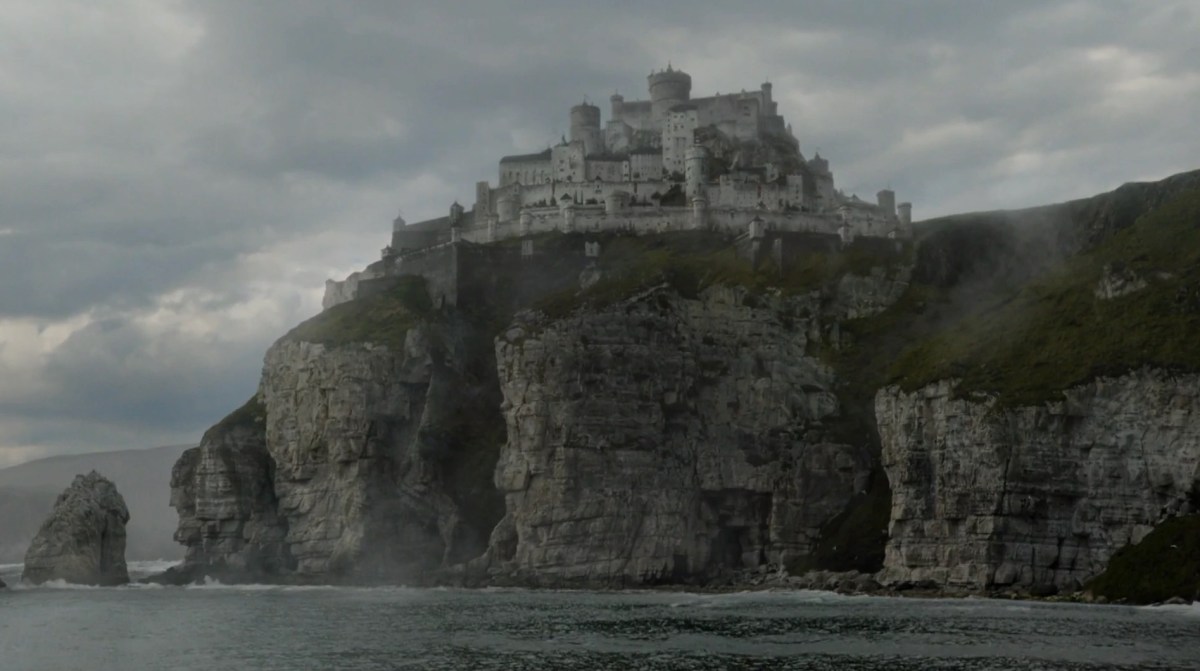
And it’s that gold that makes House Lannister — the Wardens of the West ever since the Conquest — one of the richest in the Seven Kingdoms (something that we learned very well from Game of Thrones). The Westerlands’ typical landscapes also consist of fertile hills and fields, especially when moving down towards the Reach. It’s also because of those hills that the surname for Westerlands-born bastards is Hill.
Among the vassal houses of House Lannister is House Clegane, whose members Sandor and Gregor we saw serving under the Lannisters in Game of Thrones. The Reynes of Castamere were also Lannister bannermen, but the House was eradicated by Tywin Lannister. This was the story immortalised in the infamous “The Rains of Castamere” song.
The Riverlands
The Riverlands are located more or less in the centre of the Seven Kingdoms, reaching up into the Neck that leads North. Their name comes, as you might guess, from the many rivers that cross it— the Blackwater Rush, which then passes through King’s Landing before going into the Narrow Sea, the Tumblestone and the three forks of the Trident. The same name that Riverlands bastards carry, Rivers.
Historically, these lands have always been disputed and contested—various families holding the title of King of the Trident or King of the Rivers and the Hills. The Andals brought their own dynasties with them, clashing with the Storm Kings and the Kings of the Iron Islands for centuries. When Aegon Targaryen made land with his dragons, House Tully was the first to join them revolting against House Hoare— and its Lord, Harren the Black, who ordered the construction of the famous castle of Harrenhal. Aegon and Balerion melted Harrenhal to the ground, and after that, the new King rose House Tully to rule over the Riverlands.
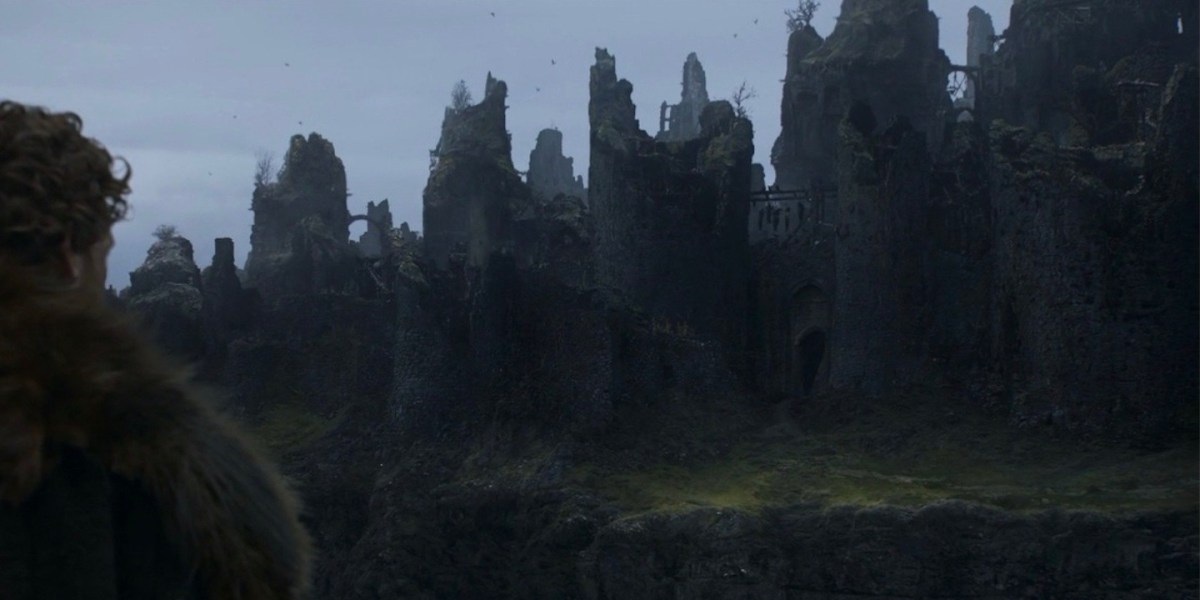
The Tullys’ seat of power is Riverrun, sitting at the juncture of the Tumblestone and the Red Fork of the Trident. Another castle sitting on top of one of the forks is the Twins of House Frey, standing on both sides of the Green Fork and pretty much ruling the passage through the river. It was at the Trident that Rhaegar Targaryen died in battle against Robert Baratheon—on a crossing known as the ruby ford for the rubies that were knocked from Prince Rhaegar’s armour.
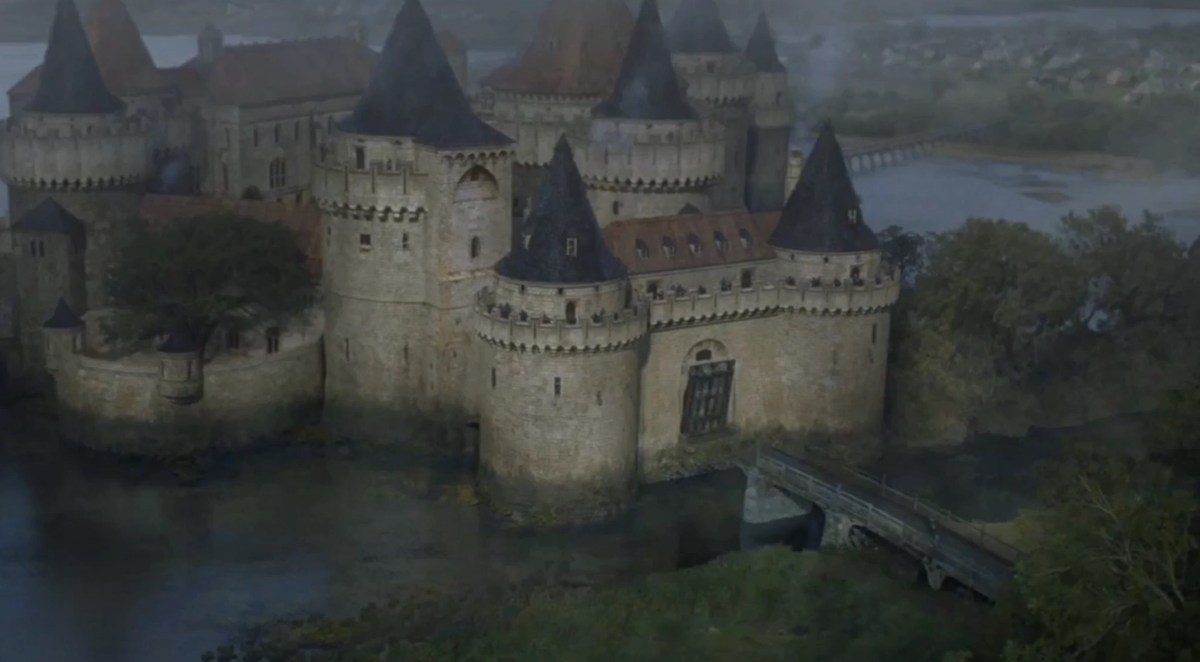
The Vale
The Vale sits on the eastern shore of Westeros, surrounded by the Narrow Sea on one side and the Mountains of the Moon on the other— creating an enclosed region that has always more or less kept to itself. In a way it reflects its sovereign lords— the Arryns, former Kings of Mountain and Vale and now Wardens of the East, ruling from their seat of the Eyrie.
The Eyrie is located on a mountain peak known as the Giant’s Lance— it’s considered virtually immune to attacks since it can be reached only through a small causeway that would never allow for an entire army to pass. And that’s why the only time it was taken it was on dragonback— when Visenya Targaryen bloodlessly brought the Vale into the new realm that was forming during the Conquest.
Arryn bannermen — like Houses Royce and Waynwood — can raise a military strength that is comparable to that of Dorne and the North, as we saw in Game of Thrones when the Knights of the Vale come to turn the tides of the Battle of the Bastards. In the territory of the Vale there are also the Fingers, narrow peninsulas stretching out into the Narrow Sea— the smallest of the Fingers is the seat of House Baelish, and that’s why on Game of Thrones Petyr Baelish was nicknamed Littlefinger.
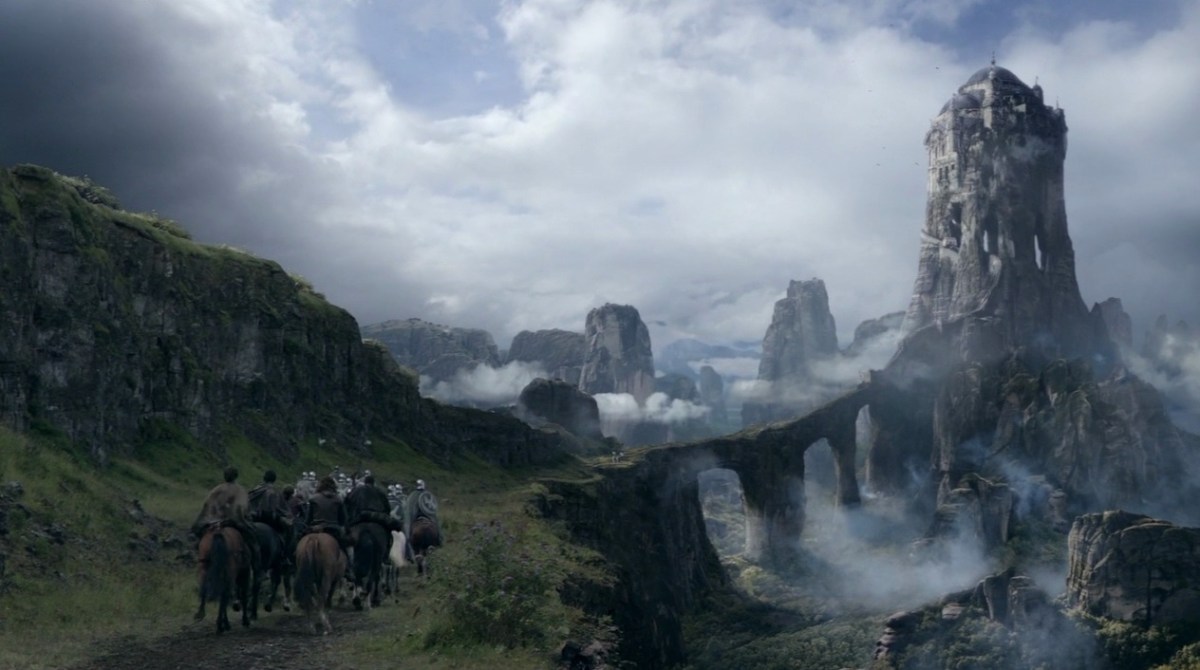
The Iron Islands
The Iron Islands are located in the Sunset Sea, off the shore of the Riverlands, the Westerlands and the North. The archipelago includes some forty-odd islands, of which seven are considered the most important ones— Pyke, Great Wyk, Old Wyk, Harlaw, Saltcliffe, Blacktyde and Orkmont. Many others are used for sheep grazing or are completely uninhabited.
The rule of the Iron Islands comes from Pyke, the seat of House Greyjoy— bearing the title of the Lord Reaper of Pyke. They tend to follow their own god, the Drowned God, whose cult dates back to even before the Andal invasion.
In general, the Iron Islands are small and barely fertile, surrounded by a stormy sea. Because of that, the Ironborn have always looked to the rest of Westeros to get the means for surviving— by raiding and pillaging the western shore of the mainland. House Greyjoy’s motto is a reminder of the ironborn way of life, always intent on paying the “iron price”— “We Do Not Sow”.
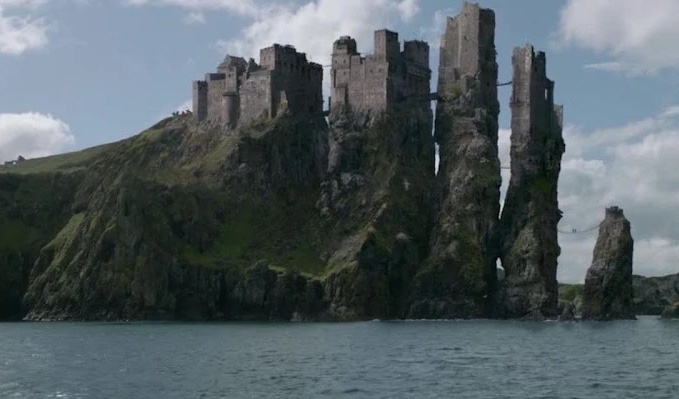
The North
The North is the largest of the Seven Kingdoms, stretching from the neck at the border of the Riverlands until the Wall. House Stark has ruled it for thousands of years first as Kings in the North and then as Wardens of the North— always from their seat of Winterfell, which traditionally must always be a Stark present within its walls.
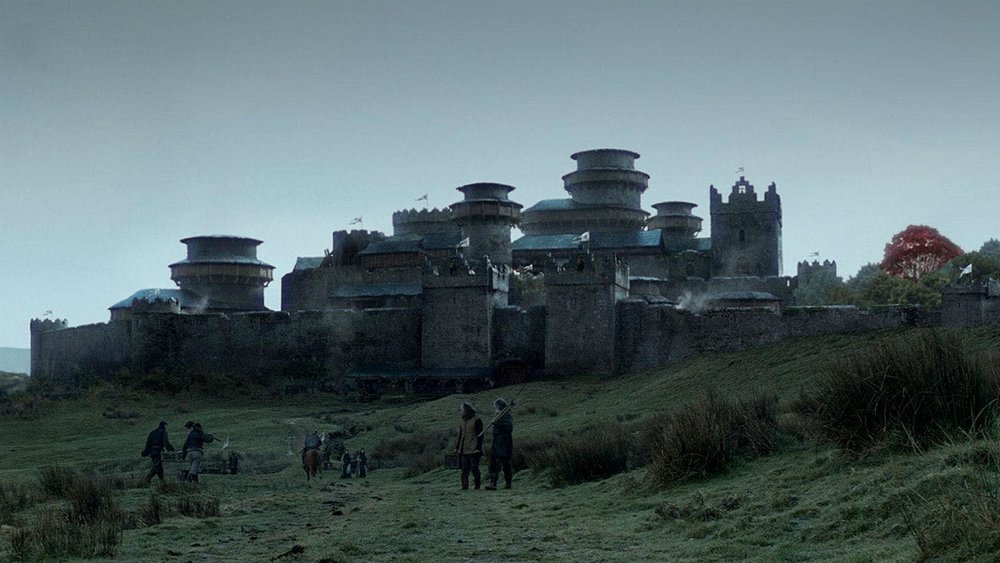
The Stark and their bannermen — like Houses Umber, Bolton, and Karstark — still follow the old gods, praying in front of heart trees and refusing to take holy vows, which is why not many northmen actually become knights. The northmen also have very strong ties to the Night’s Watch, still held in high regard in the North— several houses send regular supplies to Castle Black to help the brothers of the Watch.
As we very well know, northern bastards of noble origins are given the surname of Snow. Unless they’re actually secret sons of the defeated crown prince, in which case they could also choose to go with their birth name— Jon Snow, what’s good?
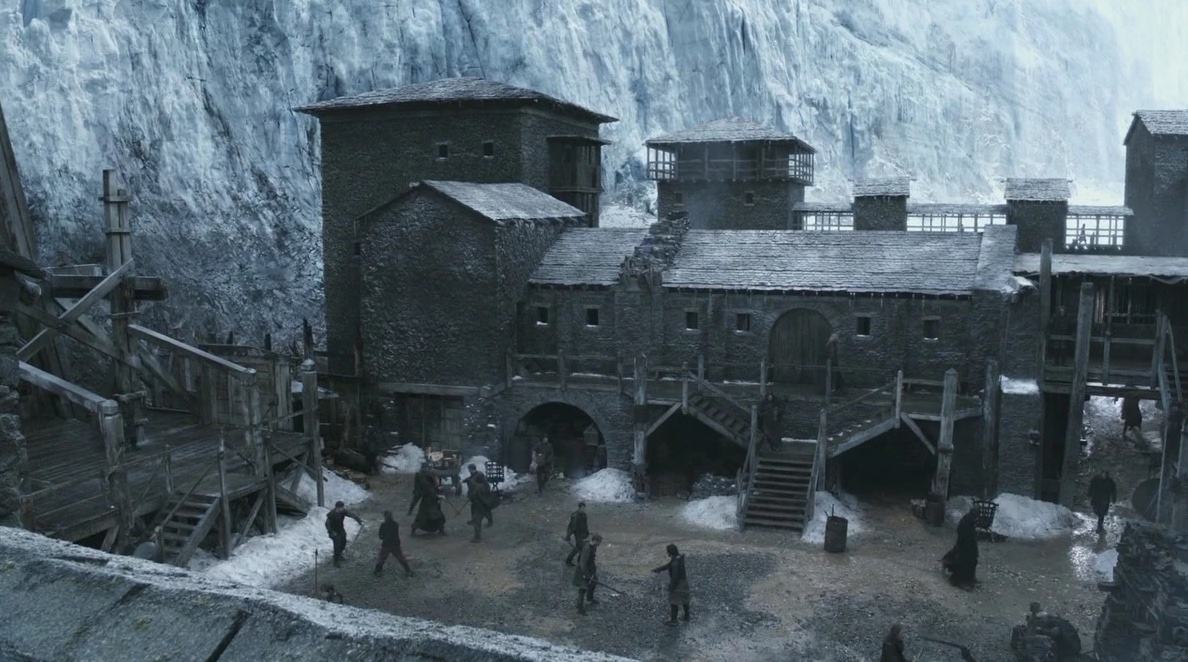
Beyond the Wall
The Night’s Watch holds the Wall— the giant barrier of ice that acts as the northernmost border of the Seven Kingdoms. On the other side of it, there are the so-called lands of “beyond the Wall,” of which only a small part has been mapped. The Haunted Forest opens up immediately after the Wall, reaching the shores of the Shivering Sea and the mountains of the Frostfangs and Thenn.
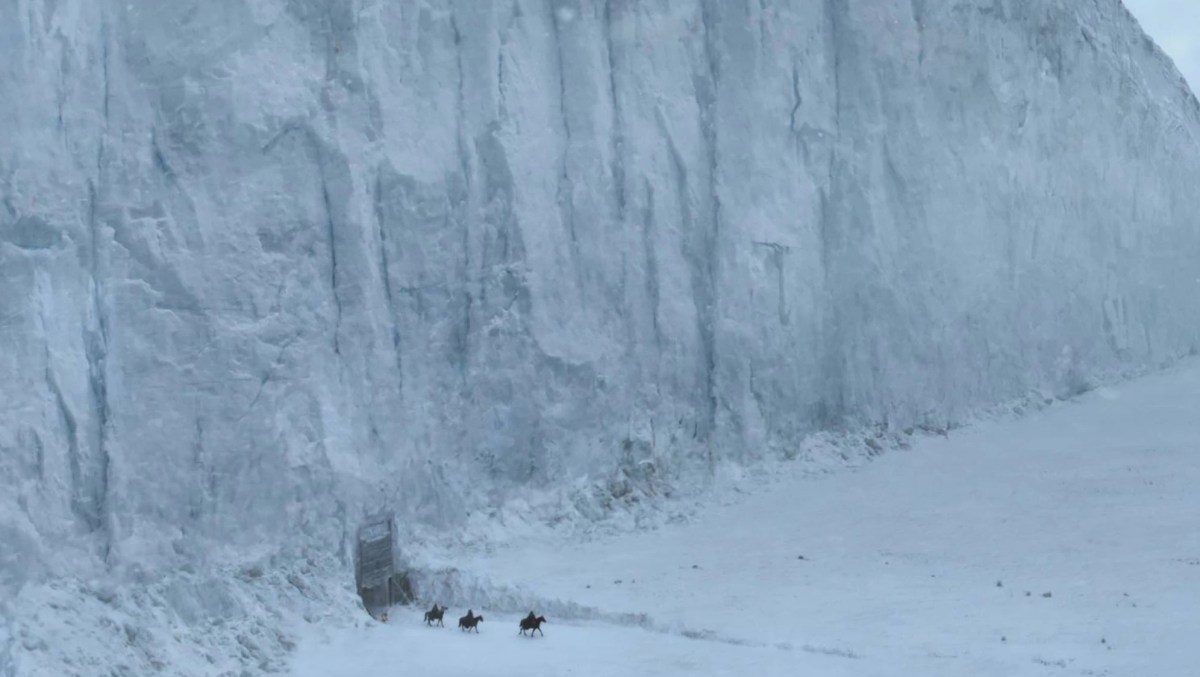
After that, there are the Lands of Always Winter, which remain unexplored and from which the Others are said to originate.
(via: AWOIAF; image: HBO)



